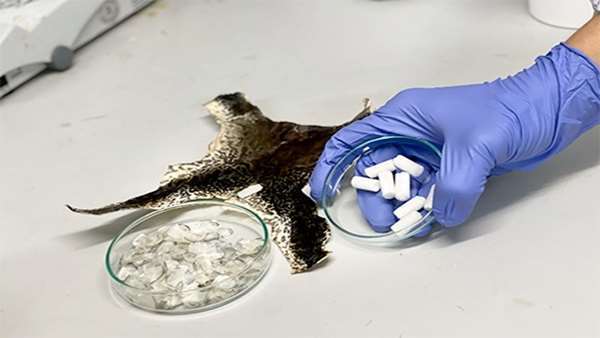NTU scientists turn unwanted fish scales & bullfrog skin into new biomaterial that helps repair bone tissue
Scientists at the Nanyang Technological University (NTU) have discovered a method to convert aquaculture waste into a new sustainable biomaterial that could potentially benefit the field of medicine.
Scientists at the Nanyang Technological University (NTU) have discovered a method to convert aquaculture waste into a new sustainable biomaterial that could potentially benefit the field of medicine.
You would be surprised at the amount of waste Singapore's aquaculture industry produces.
People here consume around 100 million kg of fish and frog flesh per year. As a result, fish scales and bullfrog skin are two of the largest aquaculture waste side streams at local fisheries and farms.
The NTU team, led by Dalton Tay, an assistant professor at NTU School of Materials Science and Engineering, was able to develop a new natural biomaterial from discarded fish scales and bullfrog skin.
The two waste products contain collagen and hydroxyapatite (HA). These two components are also typically found in bones.
The porous biomaterial developed from the process thus has a structure, composition, and ability to promote cell attachment similar to bones.
As such, the biomaterial can actually be used to help in bone repair.
Lab tests conducted showed that when scientists seeded bone-forming cells onto the biomaterial "scaffold", the number of cells increased significantly after a week.
The cells were also uniformly distributed across the scaffold; this indicates that the scaffold could promote proper cellular activities and eventually lead to the formation of tissues.
Additionally, the team found that the risk of the biomaterial triggering an inflammatory response in the body is low.
This biomaterial scaffold can be used to help regenerate bone tissue lost to disease or injury, such as jaw defects from trauma or cancer surgery.
It could also assist bone growth around surgical implants such as dental implants.
This poses a more convenient, and time- and cost-saving alternative to using a patient's own tissues — such processes usually require additional surgery to extract said tissues from the bone.




ارسال به دوستان